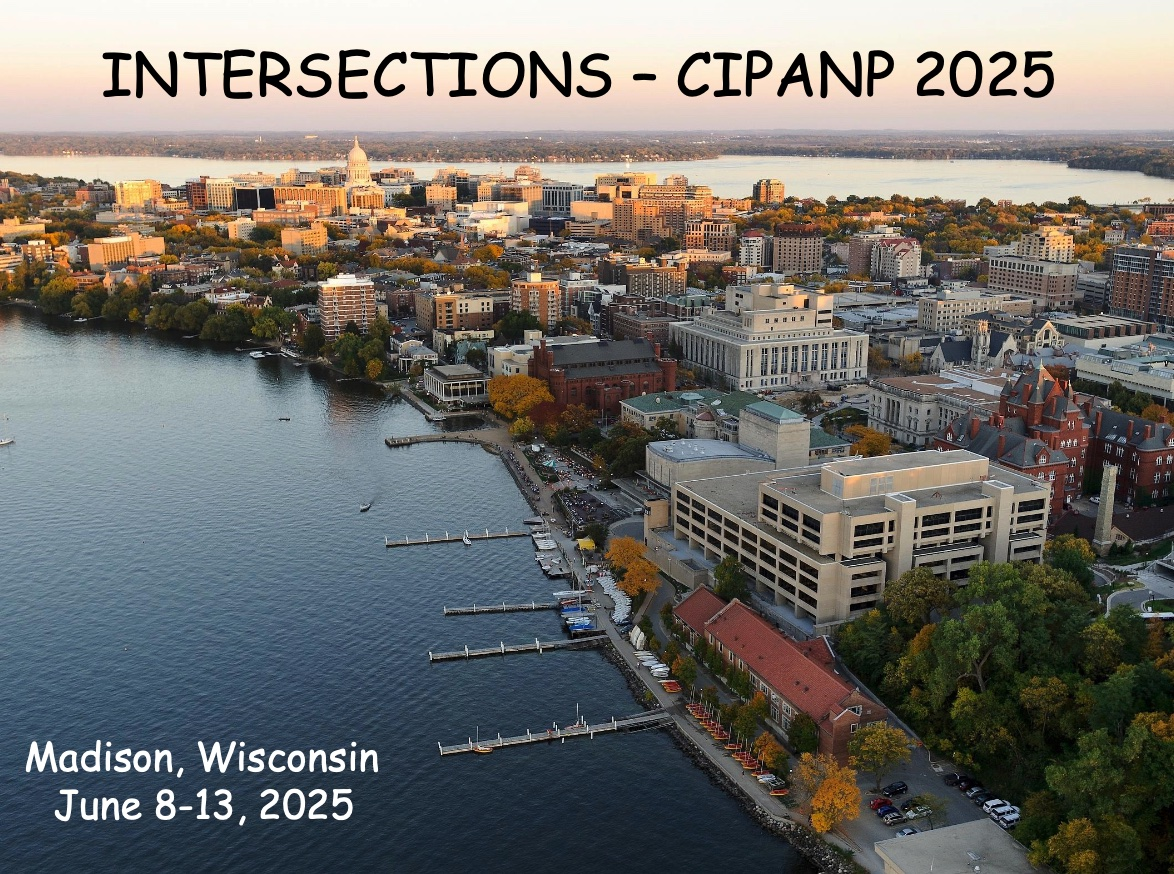Conveners
Nuclear Structure for Neutrinos and Astrophysics: Parallel 3
- Ingo Tews (Los Alamos National Laboratory)
Nuclear Structure for Neutrinos and Astrophysics: Parallel 6
- Anna McCoy (Argonne National Lab)
Nuclear Structure for Neutrinos and Astrophysics: Parallel 7
- Christian Drischler (Ohio University)
Modern first-principles (or “ab initio”) many-body simulations make it possible to compute the structure of atomic nuclei from scratch, starting from effective field theories of quantum chomodynamics. Recent developments have extended the reach of these simulations to the heaviest stable isotopes, to higher precision, and to new applications including many studies of fundamental interactions...
We investigate how weak interactions and bulk viscosity affect oscillation modes in hot neutron stars, such as those formed after supernovae or neutron star mergers. At temperatures up to 5 MeV, weak interaction rates become fast enough to damp composition g-modes, low-frequency oscillations driven by composition gradients. We introduce the dynamic sound speed, a complex, frequency-dependent...
Our understanding of the origin of elements heavier than iron relies on nucleosynthesis simulations, which in turn require accurate nuclear structure input, as beta-decay strengths and half-lives, especially for nuclei near the neutron dripline. In this talk, I will present preliminary coupled-cluster calculations of beta-decay strengths for neutron-rich nickel isotopes, motivated by future...
Neutrinoless double-beta ($0\nu\beta\beta$) decay is a hypothetical weak-interaction process in which two nucleons inside an atomic nucleus $\beta$-decay simultaneously without emitting (anti-)neutrinos. Since the $\beta$ particles are emitted without accompanying antiparticles, the process violates lepton-number conservation and requires that neutrinos are Majorana particles, hence...
Nuclear matrix elements play a crucial role in linking theory with various beyond the Standard Model (BSM) search experiments, including those related to dark matter, neutrino interactions, and β-decays. However, theoretical efforts have primarily focused on scalar and vector interactions, leaving tensor couplings comparatively underexplored due to their inherent complexity. In this talk, I...
Sterile neutrinos are present in multiple extensions to the Standard Model and participate in neutrino mass mechanisms, from simple type-I seesaw models to UV complete theories like left-right symmetry. In total analogy to the case of light neutrinos, the neutrinoless double β decay amplitude induced by the exchange of sterile neutrinos requires the introduction of a leading-order, short-range...
Testing the Standard Model (SM) prediction of unitarity of the Cabibbo-Kobayashi-Maskawa matrix in principle allows us to probe beyond- the-SM physics to very high energy scales. However, making the most out of these very precise measurements requires controlling theory predictions at a similar level of accuracy. In this talk, I will focus on the SM prediction for the nuclear beta decays that...
Recent advances have enabled precise joint mass–radius measurements of isolated neutron stars through Shapiro-delay observations with NASA’s Neutron Star Interior Composition Explorer (NICER) detector aboard the International Space Station. Intriguingly, NICER’s first two data points suggest a surprisingly weak dependence of radius on mass, with 1.4 and 2.0 solar mass stars showing similar...
Chiral Perturbation Theory (ChPT) is an effective field theory that systematically describes the interactions of pions and nucleons, allowing the construction of nuclear forces. While two-body potentials provide the largest contributions to these interactions, three-nucleon (3N) forces can play an important role in systems like nuclei or neutron stars.
The current derivation of the 3N force...
Understanding the equation of state (EOS) of pure neutron matter is necessary for interpreting observations of neutron stars. Reliable data analyses of these observations require well-quantified uncertainties for the EOS input, propagating uncertainties from nuclear interactions to the EOS. Then, observations can, in turn, put constraints on nuclear interaction parameters. However, both...
Nuclear matter equation of state (EOS) is essential for understanding the properties of supernovae explosions and neutron stars. We explore the application of In-medium Similarity Renormalization Group (IMSRG) method in nuclear matter calculations. A many-body framework is built to construct EOSs for nuclear matter with a range of proton factions using IMSRG from different nuclear interaction...

